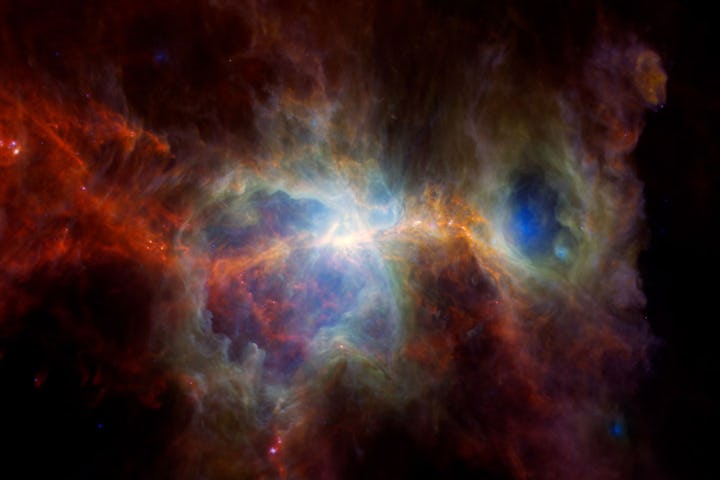NASA's Orion Nebula Image Shows Astounding Birth And Death Of Stars
On Nov. 22, NASA shared new imagery of the Orion Nebula made up of data from three telescope images to create something astounding.

NASA has released another stunning image that’s otherworldly beautiful over Thanksgiving week, even if you have no idea what you’re looking at. Of course, when you do know what you’re looking at and what this image of the Orion Nebula means, it becomes much more spectacular. For parents who love learning about outer space with the kids, here’s what this image is really showing, beyond striking colors.
On Nov. 22, NASA shared new imagery that combines previously released data taken from three telescopes. The combination of data gives us a fuller picture of the Orion Nebula that we can only see because of the combined instruments.
Can you explain what we see in these photos like we’re 5 years old?
According to NASA, the instruments used to capture the data includes “the now-retired Herschel Space Telescope, an ESA observatory, NASA’s retired Spitzer Space Telescope, and NASA’s Wide-Field Infrared Survey Explorer (WISE).”
That alone is really cool, but what’s happening in these images? Essentially, the telescopes collected data from the same area, but each picked up something different. So combining them gives us this incredibly colorful and intricate cloud.
“The images shows infrared light, or wavelengths that the human eye cannot see,” NASA explains. What we can see, however, is really pretty dust that tells scientists a lot, too.
“The blue light indicates warm dust, heated by radiation from large, bright stars that can release up to one million times more light than our Sun,” NASA explains. “All that radiation breaks apart dust grains and carves out cavities, like the two blue ‘bubbles’ in the image.”
The rest of the dust is “swept away by winds from stars or when the stars die explosive deaths,” NASA shares. The red colors are where the dust is cold (as in minus 440 degrees Fahrenheit cold), and the orange and red filaments are where the dust condenses to eventually form new stars.
So, long story short, this image shows the dust left behind when stars are born and when stars die.